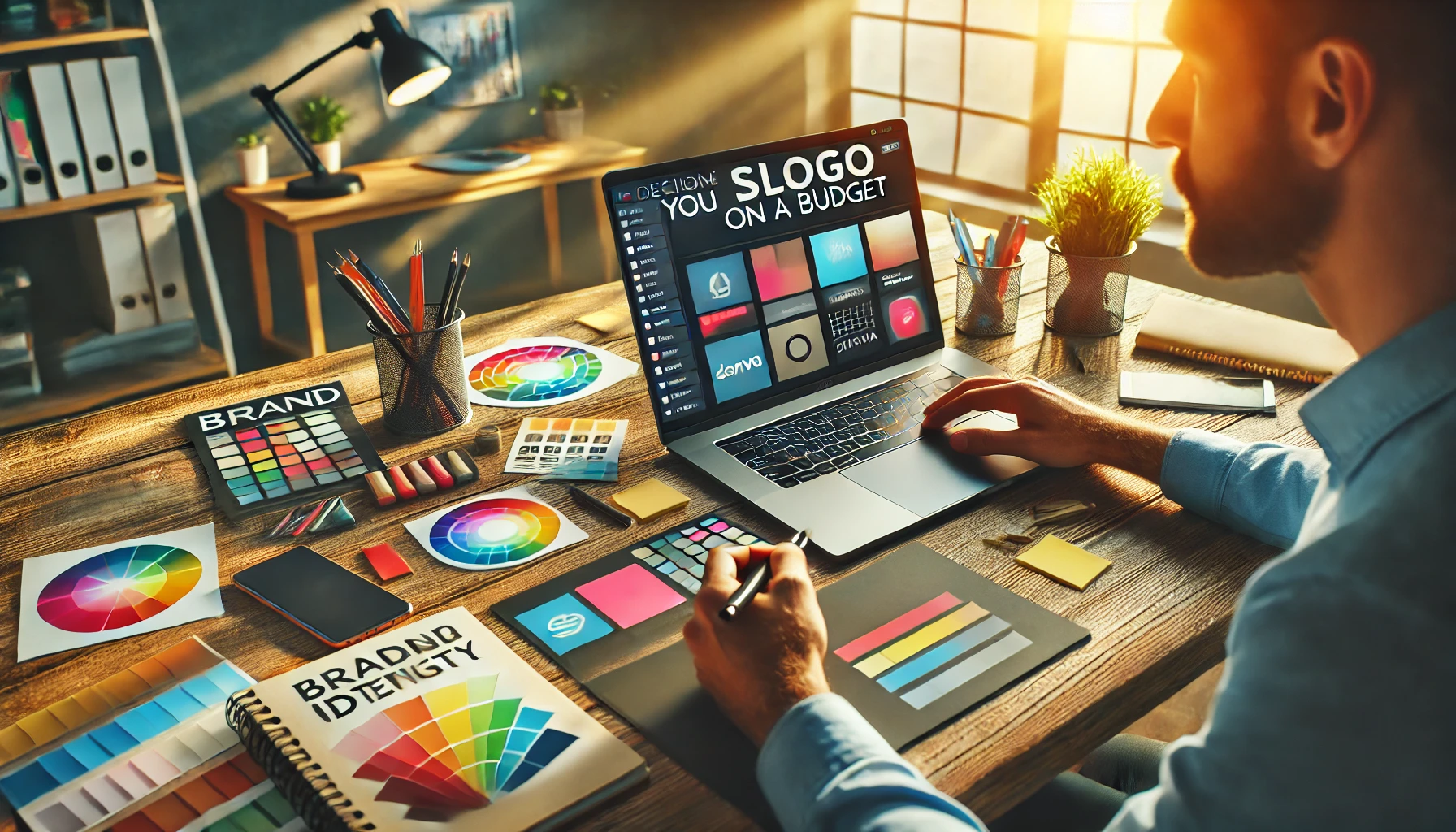When you’re just starting a small business, branding can feel overwhelming — and expensive. You might think you need to hire a professional designer or agency to build a recognizable, professional image. But the truth is, you can create a strong brand identity even with limited resources.
In today’s world, all you need is clarity, creativity, and the right free or low-cost tools. In this article, we’ll show you step-by-step how to create a professional-looking brand identity on a budget.
What Is Brand Identity and Why Does It Matter?
Your brand identity is the visual and emotional representation of your business. It includes everything from your logo, fonts, and colors to your tone of voice, values, and how people feel when they interact with you.
A strong brand:
- Builds trust and recognition
- Makes your business look professional and credible
- Attracts your ideal audience
- Helps you stand out in a crowded market
In other words: good branding makes people want to do business with you.
Step 1: Define Your Brand Personality
Before creating visuals, define the personality behind your brand. Ask yourself:
- What values guide your business?
- How do you want people to feel when they see your brand?
- If your brand were a person, how would it speak and behave?
For example, a homemade soap business might be:
- Natural, calm, and eco-conscious
- Using soft colors and a gentle tone of voice
Whereas a tech consulting brand might be:
- Bold, innovative, and confident
- Using sharp visuals and direct language
Write 3–5 adjectives that describe your brand. These words will guide every visual and content decision from here on.
Step 2: Choose Your Brand Colors
Color plays a powerful role in how people perceive your brand. Stick to 2–3 main colors to keep your look clean and consistent.
Here’s how to choose:
- Use free tools like Coolors.co or Color Hunt to explore palettes
- Make sure your colors reflect your brand personality
- Check contrast and readability for accessibility
Example:
- A calming wellness brand: soft green, beige, white
- A bold fashion startup: black, bright red, white
Save the hex codes (e.g., #FAF3E0) to use them consistently across your posts, packaging, and website.
Step 3: Pick Fonts That Match Your Style
Fonts say a lot about your brand. Are you fun and playful, or formal and high-end?
Tips:
- Choose one heading font and one body font
- Use free fonts from Google Fonts or Fontpair
- Avoid using more than two fonts to keep it clean
Example combinations:
- Friendly brand: Poppins + Open Sans
- Elegant brand: Playfair Display + Lato
- Modern brand: Montserrat + Roboto
Be sure to use the same fonts in your Instagram posts, website, and PDFs.
Step 4: Create a Simple, Clean Logo
You don’t need to spend hundreds on a logo. Use free logo makers or DIY tools like:
- Canva (with tons of free templates)
- Looka
- Hatchful by Shopify
- LogoMakr
Tips for logo design:
- Keep it simple (no clutter or complicated icons)
- Make sure it works in black and white
- Design it in a square format for social media profiles
Save versions of your logo with transparent backgrounds so you can place it on any image.
Step 5: Define Your Visual Style
Now that you have colors, fonts, and a logo, create a style guide — even if it’s just a one-page PDF or folder.
Include:
- Your logo (and variations)
- Color codes
- Fonts and usage
- Icon style
- Types of images you’ll use (real photos, flat illustrations, etc.)
This will keep your brand consistent whether you’re designing posts, packaging, or presentations.
Step 6: Use Canva to Design Like a Pro
Canva is a small business owner’s best friend. It’s free, user-friendly, and powerful enough to design everything you need:
- Instagram posts
- Business cards
- Flyers
- Product labels
- Website graphics
Tips:
- Use Canva’s “Brand Kit” (available in the free plan too)
- Create templates so you can reuse your designs faster
- Maintain consistency in your layout and spacing
With just a few hours of practice, you can start creating stunning visuals for your brand — no designer needed.
Step 7: Apply Branding Everywhere
Now it’s time to use your new identity consistently across your business touchpoints:
- Website and blog
- Social media profiles
- Product packaging
- Business emails and proposals
- Invoices and PDFs
- Customer communications
The more consistent you are, the more professional your brand appears — and the more likely people are to remember and trust you.
Step 8: Tell Your Brand Story
Visuals attract attention, but stories build emotional connection. Share your “why” — why you started, what you believe in, and who you’re here to help.
Include your story on your website, Instagram bio, and product packaging. This makes your brand human and relatable — especially important for small businesses.
Step 9: Get Feedback and Improve
Ask friends, followers, or loyal customers:
- How would you describe my brand in three words?
- Do my colors and logo feel professional?
- What do you think I could improve?
Use that feedback to tweak your design or messaging without needing a full rebrand.
Final Thoughts: Professional Branding Is Possible on Any Budget
You don’t need thousands of dollars to look polished and professional. All you need is intention, creativity, and the willingness to show up with clarity and consistency.
By following these steps, you’ll create a brand identity that reflects your values, connects with your audience, and sets the foundation for long-term growth — all without breaking the bank.
Your brand is more than just how it looks — it’s how it makes people feel. Make it count.
